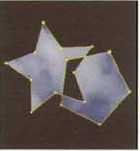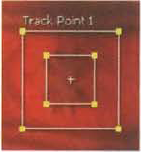Chapter 7. Masking, Rotoscoping, and Motion Tracking
"Tracking is something that a Flame artist will do every day, be it making a garbage mask to follow a simple move or tracking a new head onto someone".

Masking, which is the process of creating mattes, is an inescapable step for complex compositing. Masking may be as simple as drawing a spline path with a dedicated masking tool. However, the task becomes more complicated when the matte needs to travel and the masking turns into rotoscoping. Motion tracking, on the other hand, requires the software to track features or patterns with a piece of footage and convert that information to animation curves. Once the curves exist, they may be used to apply motion to a different layer or input, remove the jitter from a shaking camera, or change the perspective of an element so that it fits a scene with a moving camera. Although the motion tracking process is semi-automated, special care must be taken when positioning tracking points. To help you practice this technique, as well as various masking and rotoscoping tasks, a new tutorial is added to this chapter. In addition, you'll have to chance to revisit the tutorial from Chapter 3.

Mattes vs. Masks
Although the terms ...
Get Professional Digital Compositing: Essential Tools and Techniques now with the O’Reilly learning platform.
O’Reilly members experience books, live events, courses curated by job role, and more from O’Reilly and nearly 200 top publishers.

